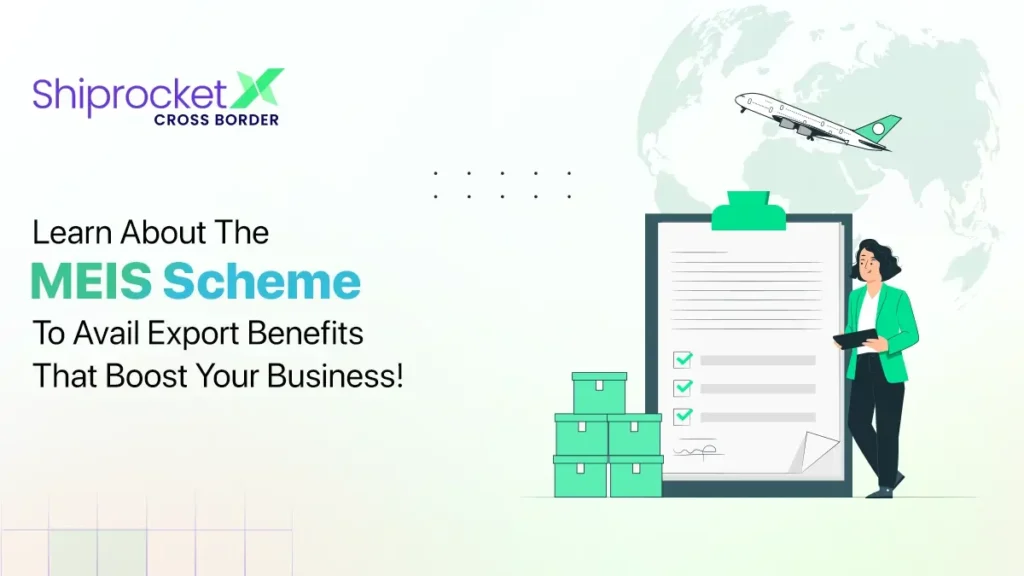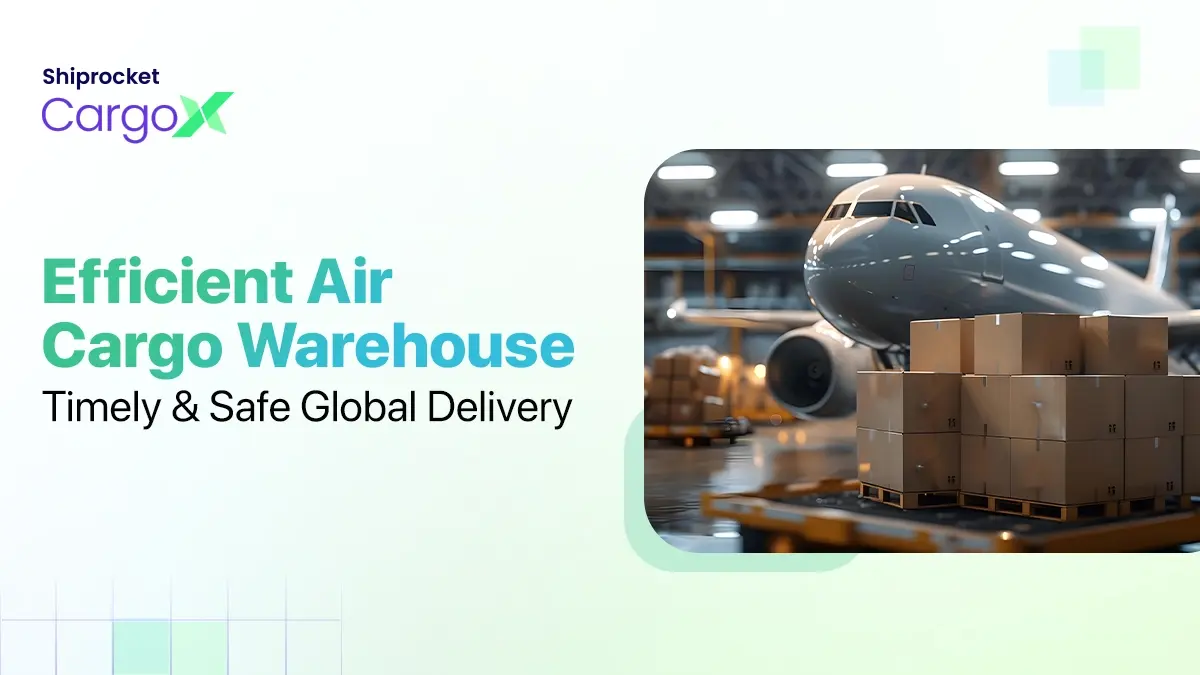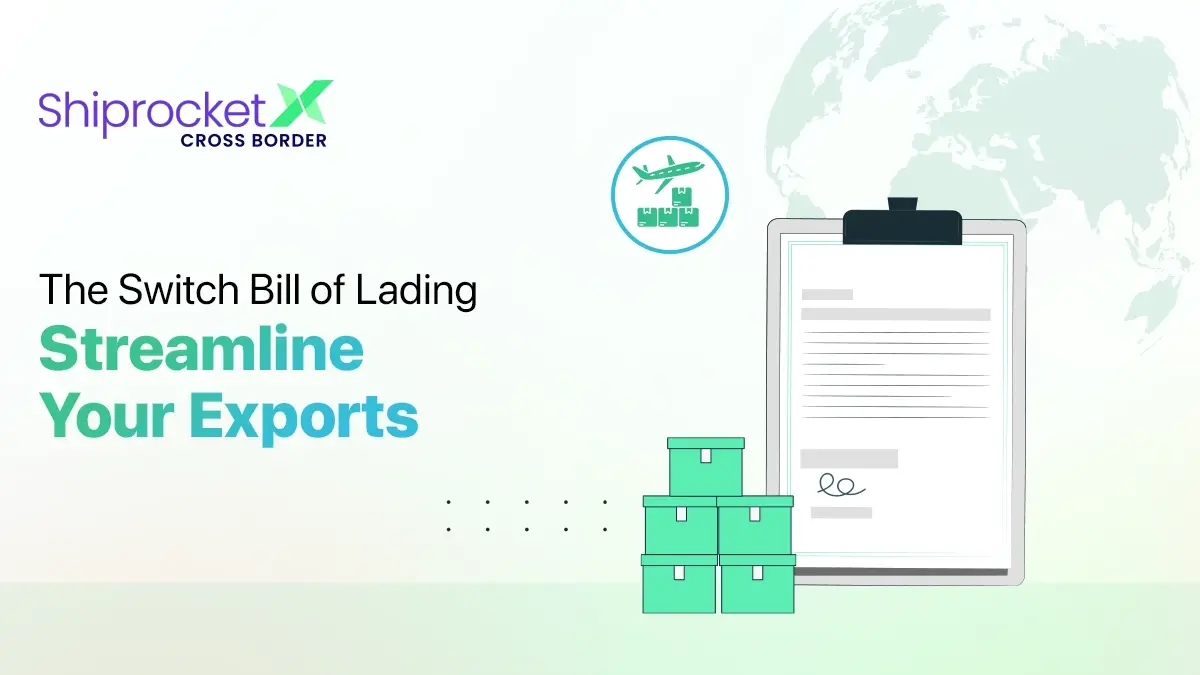What is Merchandise Exports from India Scheme (MEIS)?
The Government of India launched the Merchandise Exports from India Scheme (MEIS) to increase the export of particular goods manufactured within the country.
The main objective of this scheme was to provide the exporters with rewards in the form of duty credit scrips. These duty scrips enable the exporters to pay customs duty, which helps increase the flow of foreign currency in India.
The MEIS license was introduced through the Foreign Trade Policy (FTP), which came into effect on 1 April 2015 and was applicable till 2020. This scheme replaced the below 5 incentive schemes that were earlier available under the Foreign Trade Policy 2014-2019 –
- Market Linked Focus Product Scheme (MLFPS)
- Focus Product Scheme (FPS)
- Agriculture Infrastructure Incentive Scrip (AIIS)
- Focus Market Scheme (FMS)
- Vishesh Krishi Gramin Upaj Yojana (VKGUY).
The Government of India allocated more than Rs.22,000 crores per year under this scheme to promote exports.

When Was MEIS Implemented and When Was it Scrapped?
The MEIS scheme was launched by the Government of India. It was a part of the 2015-2020 Foreign Trade Policy of India. The scheme provided numerous duty credit scrips as incentives. They were applicable from the date of the launch of the MEIS, 1 April 2015, and were valid until 31 March 2020. It was replaced by the Remission of Duties and Taxes on Export Products (RoDTEP) scheme, which was launched on 1 January 2021.
Why Was MEIS Replaced With the RoDTEP Scheme?
MEIS was replaced by the RoDTEP scheme because the WTO held that the export subsidy programmes offered by the GOI breached the provisions of the trade body’s terms and conditions. The panel demanded that these export subsidy programmes be removed or changed. Thus, the RoDTEP Scheme was introduced to reflect India’s compliance with the WTO guidelines.
About RoDTEP Scheme – The Governing Body Regulating the RoDTEP Scheme
RoDTEP is notified by the Department of Commerce and is fully administered by the Department of Revenue. It was started to neutralise the costs of the exported goods by offering deductions on all hidden duties, levies, and taxes that are not refunded through existing schemes. Currently, the RoDTEP rates are from 0.3% to 4.3%. Remember, only goods produced in India are eligible for this scheme; re-exported products are not eligible.
Objectives of RoDTEP
It was introduced to increase the export as previously it was quite low. Here are some reasons why it was introduced:
- Refund of various duties and taxes that were not done previously such as Mandi Tax, VAT, education cess, and state taxes on power, oil, and water, etc.
- Automatic credit system, which means that the refund will be issued in the form of transferable electronic scrips
- Exporters’ records will be verified quickly and accurately by digital means
- To assist the exporters to meet international standards and make the quality of exports better
It covers all the sectors to ensure uniformity in all the areas and the best thing is that there is no specific threshold to apply for the RoDTEP scheme.
Taxes Compensated Under the RoDTEP Scheme
Here is the list of taxes that are compensated under the RoDTEP Scheme:
- Mandi Tax, Municipal tax or Property Tax
- Electricity duty on the purchase of power for manufacturing the product
- Stamp Duty on export documents
- Uncreditable Central GST/ State GST/Integrated GST/ Compensation Cess on passenger transport, work contract services, rent-a-cab, food and beverage, etc.
- VAT and Excise Duty on the fuel that is used in electricity generation via power plants or DG sets, transportation costs, or even fuel that is required for keeping machinery or the plant running
Who Can Avail of RoDTEP Benefits?
The RoDTEP scheme applies to all the goods that are produced in India and eventually exported. This implies that all the products manufactured within the country’s borders and later on shipped overseas are eligible for benefits under the RoDTEP scheme.
However, it is important to remember that RoDTEP benefits are not provided for services provided abroad, it is just for goods. Also, goods that are re-exported, which means products that are originally manufactured outside of India but pass through India during transportation, are not eligible for benefits under the RoDTEP scheme.
This scheme majorly targets goods that are produced locally in India and exported directly from India. The standout feature of this scheme is that it also covers goods that are exported using eCommerce platforms through courier services.
Sectors Eligible for Benefits
The RoDTEP scheme is a multi-sector scheme. This includes manufactured goods, merchant exporters and agricultural products. The good part is that all the labour-intensive sectors falling under the RoDTEP Scheme will be prioritised.
Special Economic Zone Units and Export Oriented Units are also eligible to claim the benefits under this scheme. The RoDTEP scheme also applies to goods that have been exported via courier through eCommerce platforms.
There is no minimum turnover requirement for the RoDTEP scheme. This ensures that businesses of all sizes, from small-scale enterprises to large corporations, can participate in and benefit from the scheme.
RoDTEP Rates and their Assessment
The current RoDTEP rates are in the range of 0.3% to 4.3%, which varies as per the ITC HS Code. Most of the goods are given a 0.8% incentive. Here are the RoDTEP rates for some of the significant sectors:
- Textiles: 2.4% for exports to the United States
- Chemicals: 1.4% for exports to the European Union
- Machinery: 1.0% for exports to all countries
- Agricultural products: 0.5% for exports to all countries.
Issuance of Benefits
The RoDTEP scheme was created to neutralise the taxes and duties levied on exported goods that are otherwise not remitted or refunded in any manner. This benefit is provided as a percentage of FOB or a fixed amount per unit of measurement as mentioned in Appendix 4R to the Notification.
Is RoDTEP Applicable to All Exporters?
It applies to all exporters except for:
- Products that are manufactured partly or completely in a warehouse under section 65 of the Customs Act, 1962 (52 of 1962)
- The exported goods claiming the benefits of notification No. 32/1997- Customs dated 1st April 1997
- The goods which are not allowed to be exported under “Schedule-2 of Export Policy in ITC (HS)
- Export of goods that are used after manufacturing
- The goods obtained or exported through EOU and produced in EHTP and BTP
- The export goods that are subjected to a minimum export price or export tax
- Supplies of products manufactured through DTA units to SEZ/FTWZ units
- Deemed Exports
- The exports for which the electronic documentation in ICEGATE EDI has not been made
- The goods are exported from Free Trade Zones, Export Processing Zones, or Special Economic Zones (SEZs)
- Goods exported under Advance License/Special advance license or tax-free import authorisation.
RoDTEP Vs MEIS: Similarities and Differences
Let us know about some of the similarities and differences between RoDTEP and MEIS:
| RoDTEP | MEIS |
|---|---|
| It offers rebates of central and state taxes in the form of duty credit scrips. | Incentives are provided in the form of transferable scrips. |
| RoDTEP is fully compliant with the WTO norms. | MEIS is not compliant with the WTO norms. |
| Transferable in an open market. | Transferable in an open market. |
| Product-based % is not yet provided. | 2% to 5% of the FOB value of exports. |
| Re-exported goods are not provided any benefit under this scheme. | Re-exported goods are not provided any benefit under this scheme. |
Pros and Cons of the RoDTEP Scheme
Here are some of the benefits of the RoDTEP scheme:
- It aims to refund all those taxes and levies which were earlier not allowed, such as mandi tax, toll tax, etc.
- Tax assessment has become fully automated for exporters
- Lower rate of interest for exporters on capital loans, higher insurance cover, etc.
- 100% Refund of all Indirect taxes on export products
- It aims to reduce the clearance time at the airports and ports.
Here are some cons of the RoDTEP Scheme:
The major disadvantage of this scheme is that sectors such as textiles that do not have an incidence of taxes on fuel will have lower rates under RoDTEP as compared to the engineering goods sector.
Conclusion
The Government of India is trying to increase the export margin under the new Five-Year Foreign Trade Policy by offering incentives to exporters. It is one of the significant reasons why the Indian government introduced the RoDTEP Scheme. They have also removed the GST chargeable on the sale of these scrips.
RoDTEP aims to offer incentives for the export of goods manufactured or produced in India. Now is the time to reap the benefits of this scheme offering lucrative benefits on export trade. With ShiprocketX, you can leave your stamp worldwide by selling to international customers. This platform helps you access door-to-door B2B deliveries and minimise your investment risk via its fully enabled management solutions.





i am trying to ship/export to Mexico (pin 45120) a 110 cm x 110 cm x 70 cm. box weighinh 5 kg. We are a registered MSME having IOC and DSC. Shippment item is a totally locally made Durga deity. It is made of paper mache, plaster of paris, clay, colors, decorative items, masonite board, cloth). Please advise what paperwork may we need, charges, time, any issues with the materials (negative list,.etc.). This is our first time. 94330 80680